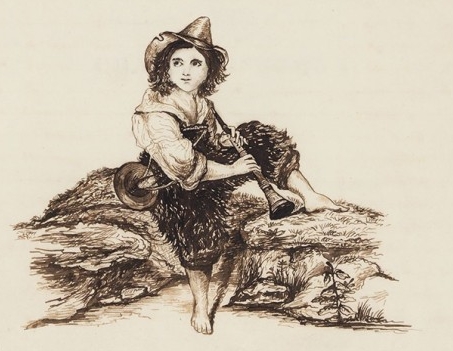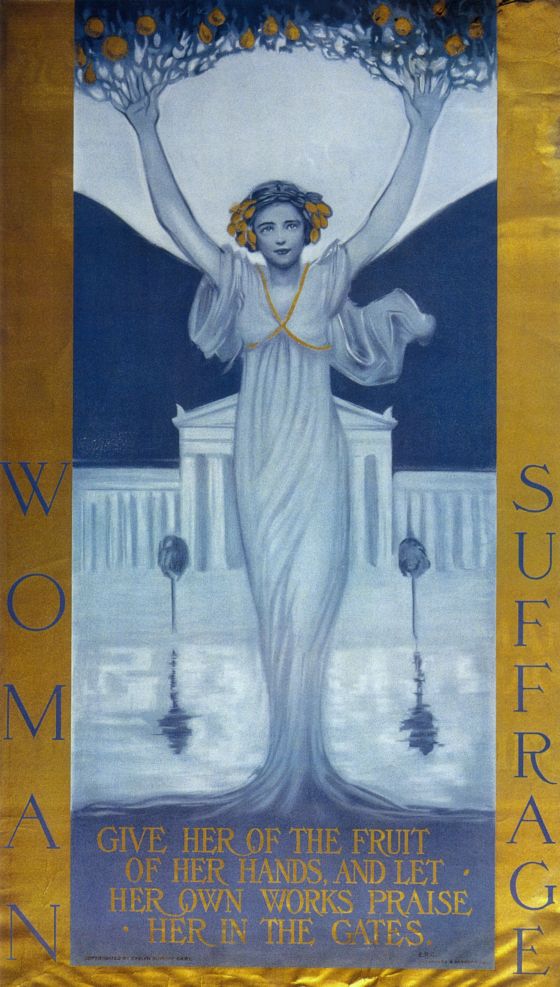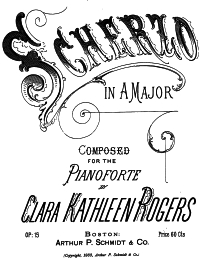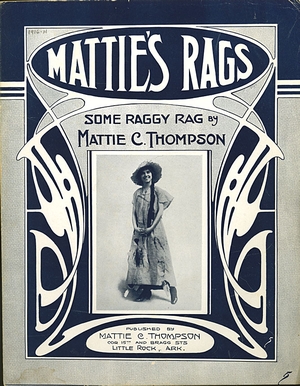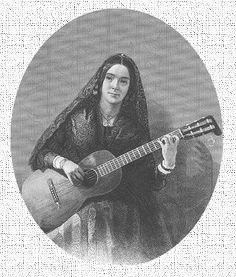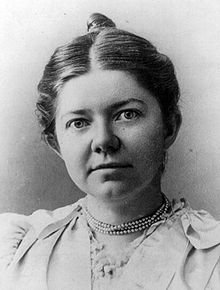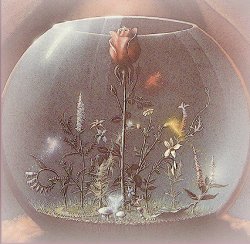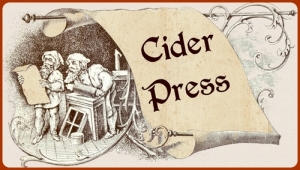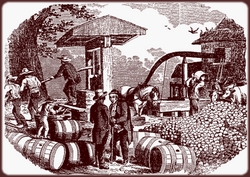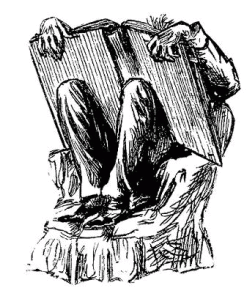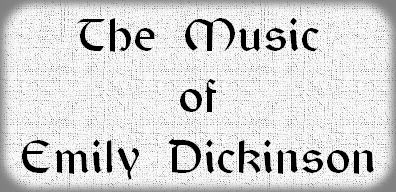
The Music of Poet Emily Dickinson
American Poet Emily Dickinson was very intereseted in music of many kinds, and kept a
personal sheet music collection which is in the Houghton Library at Harvard University.
Some of the images on this page are from the table-of-contents of her music book.Dickinson was born in Amherst, Massachusetts into a prominent family with strong ties to its community. After studying at the Amherst Academy for seven years in her youth, she briefly attended the Mount Holyoke Female Seminary before returning to her family's house in Amherst.
Dickinson lived much of her life in reclusive isolation. Considered an eccentric by locals, she developed a noted penchant for white clothing and became known for her reluctance to greet guests or, later in life, to even leave her bedroom. Dickinson never married, and most friendships between her and others depended entirely upon correspondence. She was a recluse for the later years of her life
While Dickinson was a prolific private poet, fewer than a dozen of her
nearly 1,800 poems were published during her lifetime. The work that was published during her lifetime was usually altered significantly by the publishers to fit the conventional poetic rules of the time. Her poems are unique for the era in which she wrote; they contain short lines, typically lack titles, and often use slant rhyme as well as unconventional capitalization and punctuation. Many of her poems deal with themes of death and immortality, two recurring topics in letters to her friends.
Although Dickinson's acquaintances were most likely aware of her writing, it was not until after her death in 1886—when Lavinia, Dickinson's younger sister, discovered her cache of poems—that the breadth of her work became apparent to the public. Her first collection of poetry was published in 1890 by personal acquaintances Thomas Wentworth Higginson and Mabel Loomis Todd, though both heavily edited the content. A complete, and mostly unaltered, collection of her poetry became available for the first time when scholar Thomas H. Johnson published The Poems of Emily Dickinson in 1955.
Scholar Judith Farr notes that Dickinson, during her lifetime, "was known more widely as a gardener, perhaps, than as a poet". Dickinson studied botany from the age of nine and, along with her sister, tended the garden at Homestead. During her lifetime, she assembled a collection of pressed plants in a sixty-six page leather-bound herbarium. It contained 424 pressed flower specimens that she collected, classified, and labeled using the Linnaean system. The Homestead garden was well-known and admired locally in its time. It has not survived but efforts to revive it have begun. Dickinson kept no garden notebooks or plant lists, but a clear impression can be formed from the letters and recollections of friends and family. Her niece, Martha Dickinson Bianchi, remembered "carpets of lily-of-the-valley and pansies, platoons of sweetpeas, hyacinths, enough in May to give all the bees of summer dyspepsia. There were ribbons of peony hedges and drifts of daffodils in season, marigolds to distraction—a butterfly utopia". In particular, Dickinson cultivated scented exotic flowers, writing that she "could inhabit the Spice Isles merely by crossing the dining room to the conservatory, where the plants hang in baskets". Dickinson would often send her friends bunches of flowers with verses attached, but "they valued the posy more than the poetry"
Despite Dickinson's prolific writing, fewer than a dozen of her poems were published during her lifetime. After her younger sister Lavinia discovered the collection of nearly 1800 poems, Dickinson's first volume was published four years after her death. Until Thomas H. Johnson published Dickinson's Complete Poems in 1955.
(Adapted from Wikipedia)
Downloading the You can download the notation for all 11 pieces of music in PDF format, using the following link for $4.00.
|
Three poems by Emily Dickinson
Tell-all-the-truth-but-tell-it-slant
Tell all the truth but tell it slant —
Success in Circuit lies
Too bright for our infirm Delight
The Truth's superb surprise
As Lightning to the Children eased
With explanation kind
The Truth must dazzle gradually
Or every man be blind —
The brain is wider than the sky
The brain is wider than the sky,
For, put them side by side,
The one the other will include
With ease, and you beside.The brain is deeper than the sea,
For, hold them, blue to blue,
The one the other will absorb,
As sponges, buckets do.The brain is just the weight of God,
For, lift them, pound for pound,
And they will differ, if they do,
As syllable from sound.They shut me up in Prose –
They shut me up in Prose –
As when a little Girl
They put me in the Closet –
Because they liked me "still" –Still! Could themself have peeped –
And seen my Brain – go round –
They might as wise have lodged a Bird
For Treason – in the Pound –
Other collections you might find interesting:
The Music Of 19th Century
American Women Composers
Download the sheet
music of many of the talented
Women composers of 19th Century America
Women Ragtime Composers
In the early part of the 20th Century, while legendary composers like Scott Joplin were composing what became famous "rags", many women were also composing fantastic, energetic ragtime piano music.
This collection is in PDF format, with scans of the original sheet music and covers, prepared as easy to print on standard size paper.
Cold Feet Rag - Mamie Williams
Eatin' Time Rag - Irene Cozad
Electric Rag - Mary Gilmore
Pickles & Peppers - A Rag Oddity -
Adaline Shepherd
Diablo Rag - A Rag Fantasie -
Dorothy Ingersol Wahl
Possum Rag - Geraldine Dobyns
Redhead Rag - Irene Franklin
Turkish Trophies - An Oriental Rag
- Sara B. Egan
The Aviator Rag - Irene Giblin
Blue Ribbon Rag - May Aufderheide
Butser Rag - Bessie M. Powell
Chicken Chowder - Irene Giblin
Columbia Rag - Irene Giblin
Some Raggy Rag - Mattie C. Thompson
Rag-time Dance - May Irwin
Mop Rag - Helen S. Eaton
The Nashville Rag & Two Step - Mamie A. Gunn
Snowball - Ragtime March -
Nellie W. Stokes
That Tired Rag - Charlotte Blake
Bull Dog Rag - Geraldine Dobyns
6 Ragtime pieces by Marcella A. Henry:
From a publication entitled Ragtime Review
Broadway Rag
The Covent Garden - Ragtime Waltz
Glittering Stars - Ragtime Waltz
The Green Mill Rag
Kentucky Rag
National Colors Rag
Chippewa Rag - Myrtle Hoy
After your payment is processed you will be immediately sent an email with the download link.
Ragtime Women Composers - $4.00
Hannah's Song
The art & music of Hannah Cohoon
Hannah Cohoon is the most famous of the many artists from the mystical Shaker communities in 19th Century America. What is not widely known is that she also composed interesting songs .
Hannah's Song
The Guitar Music Of
The Amazing "Mrs. Knoop"
L'Alhambra Waltz 1847The Flowers Of Andalusia 1850
Rosignol Polka 1850
Carnival Of Venice 1847
The Adieu (El Adios) 1866
Madame Delores Nevares de Goñi was one of the most prominent and talented guitarists of her time. Her performances were widely popular throughout the Americas between 1841 and 1892.
Madame De Goni's first husband also was a guitarist, but in 1845 she married George Knoop, a renowned cellist, after Sr. de Goni ..discreetlty left the scene. Most of her guitar compositions were published using only the name "Mrs Knoop".
An 1840 notice in the New York Herald:
"A distinguished female, professor of the Spanish guitar, has just arrived from Europe' Her name is Dona Dolores de Goni, a Spanish lady of exquisite beauty, and still more exquisite accomplishments in Spanish music. During the last spring and summer she gave many exhibitions before the royalty and nobility of England, that brought forth great applause. Despite the lavish claims in the press notice, de Goni was only moderately successful in London."Download the music of Mrs. Knoop
Scans of the original sheet music in PDF format, prepared for easy printing on standard size paper.
You will quickly be sent the download link by email after your payment is processed.
$3.50 - Paypal or Credit-Card
The Music of Amy Beach
Amy Marcy Cheney Beach (September 5, 1867 – December 27, 1944) was an American composer and pianist. She was the first successful American female composer of large-scale art music. As a pianist, she was acclaimed for concerts she gave in the United States and in Germany.
© 2018 - Amaranth Publishing
All rights reserved
|
Explore - The Amaranth Publishing web pages 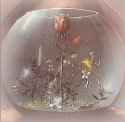 including the music of the spheres, the music of a Renaissance alchemist, music created by software and artificial intelligence, the music of the fairies, Beethoven's 10th Symphony, The Never Ending Melody, the music of the Illuminati, the world's most mysterious book, the world's oldest song, a way you can compose music like Mozart, the world's oldest love song, including the music of the spheres, the music of a Renaissance alchemist, music created by software and artificial intelligence, the music of the fairies, Beethoven's 10th Symphony, The Never Ending Melody, the music of the Illuminati, the world's most mysterious book, the world's oldest song, a way you can compose music like Mozart, the world's oldest love song, and much more........ |
|---|
|
© 2018 - Amaranth Publishing
All rights
reserved
